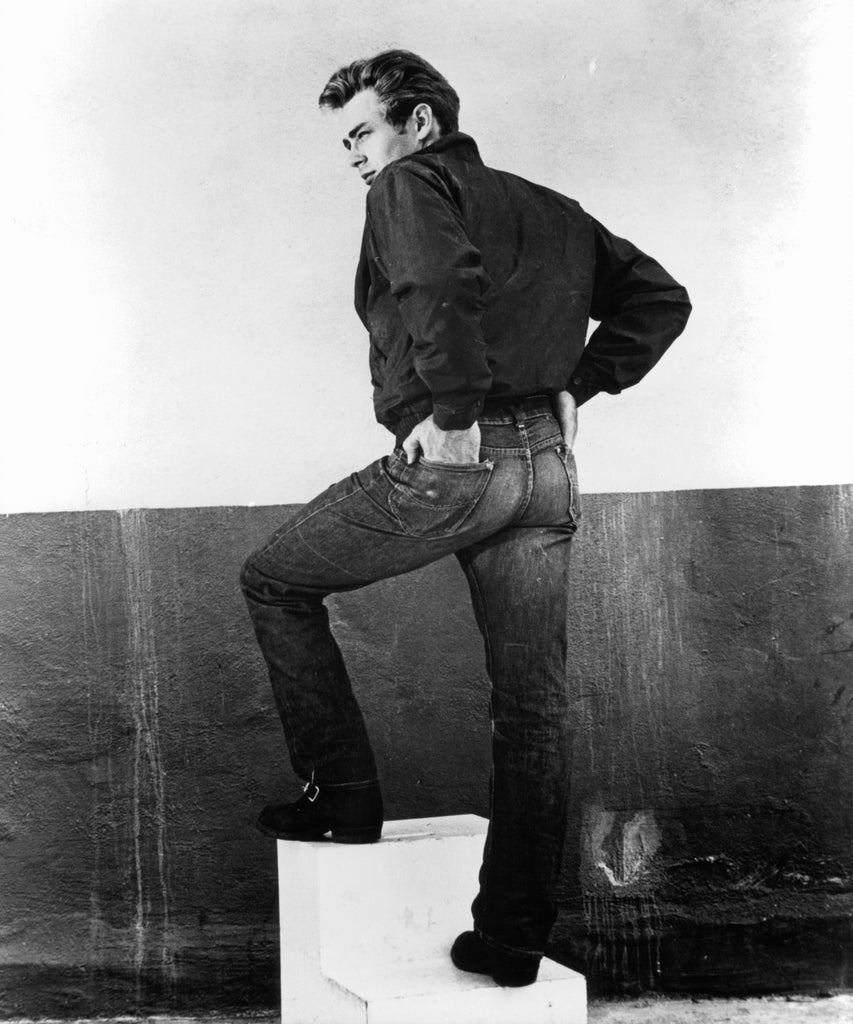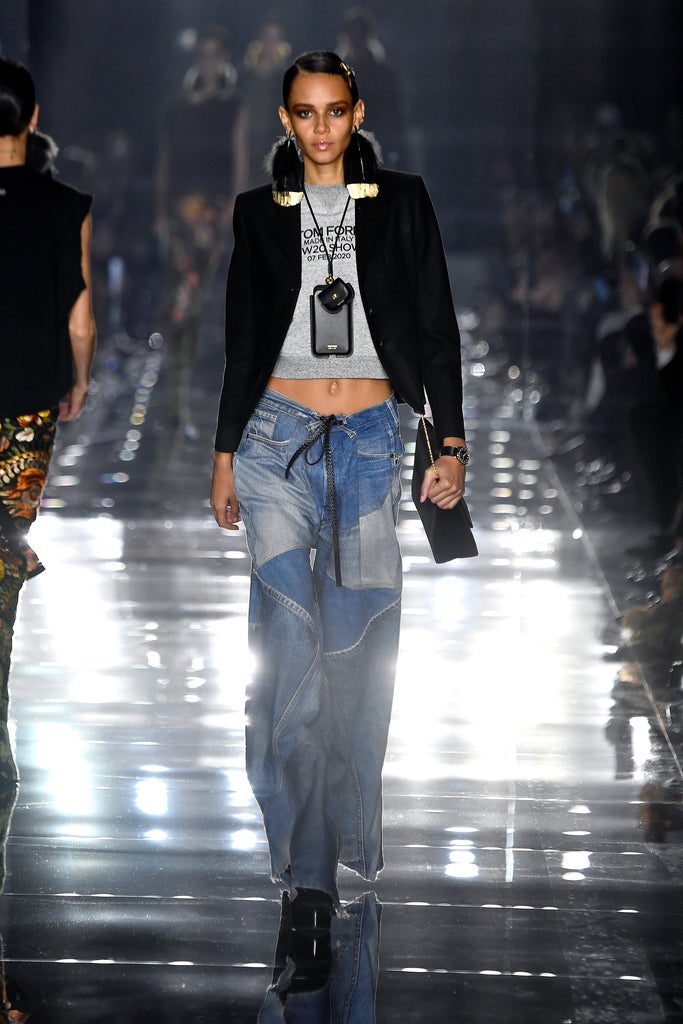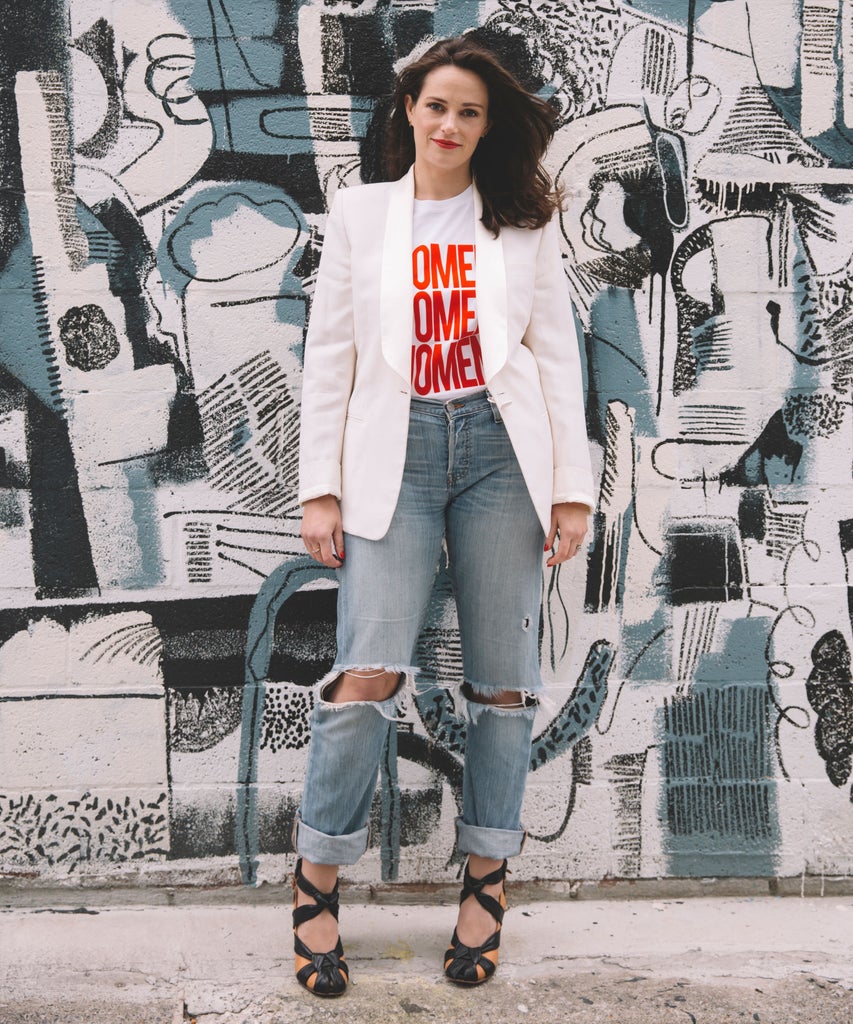Buying jeans has always come with a side of heart-racing terror for me, a holdover from when my body didn’t fit into most of them — as a teen, the very act of entering a denim store was an exercise in bravery and, inevitably, humiliation. (Forgive me my lack of confidence: I was a plus-size adolescent in the pre–body positive, ultra-low-rise era.)
Regardless of your body and how you feel about it, I’m willing to bet that you probably think shopping for jeans is the worst, too. The sizing is messed up. The price tags can be vicious. And digging through the folded stacks of denim to find the right cut in the right wash requires divine patience — and that’s before you get into the change room. Buying a new pair of jeans has been one of those fashion chores I’ve resigned myself to, along with bathing suit-shopping and getting fitted for a decent bra. And yet, jeans (especially a stiff pair with a high-waist and zero-stretch) have been a staple of my adult wardrobe, my go-to at least three times a week. Now it’s more like zero times a week. And I’m not the only one.

Since the pandemic hit, we aren’t buying clothes in the quantity we once did (surprise, surprise). But we’re especially not buying jeans. This spring and summer, denim sales have tanked. As a result, True Religion, Lucky Brand, and G-Star Raw have filed for bankruptcy, and the parent company behind Hudson Jeans and Joe Jeans has filed for Chapter 11 protection. The OG denim company, Levi’s, suffered a 62% drop in sales between April and June (its weakest quarter in two decades) and laid off 15% of its workforce. We’ve always known that shopping for jeans sucks, but we might be waking up to the fact that maybe jeans do, too.
Originally a staple of the working man and then a symbol of youth counterculture in the ’50s and ’60s, the jeans of 2020 are relegated to the back of the closet. It’s sad, really, because for so long jeans have been a fashion workhorse — something you could throw on without thinking in order to look “dressed.” They are the bottom half of the Canadian tuxedo, an icon of American style, and partner-in-crime to the Going Out Top. Now, they’re a form of bodily oppression — the last thing the working-from-home, possibly-eating-more-carbs woman needs. I’ve put on a pair once or twice in the past few months as an effort to feel more put together, but all I really feel is an assault on my crotch. To be fair, in the past I have preferred jeans that function akin to a denim corset, holding everything in place. Not only do I not want to feel that kind of restriction, I’m sort of appalled I ever did.
Is it just me? I did quick survey of girlfriends, and found that they too had forgone denim, with the exception of baggy plumber overalls and maternity jeans (despite not being pregnant anymore). Thinking I needed to find out what Young Cool People are doing (no offense, mom friends!), I asked Sara He for her opinion. He is a 19-year-old fashion design student at Ryerson University in Toronto and just won a prestigious fellowship with the Suzanne Rogers Fashion Institute. In other words: She’s the embodiment of cool.
“Jeans have always been favoured in my wardrobe, but in the context of the lockdown, my reaction to them is adverse: Even my favourite pair has been sitting in my drawer untouched,” says He.

Same, same. Like many people fortunate enough to have a job — one I can do from the safety of my home — my relationship to style changed drastically this year. I love clothes, but I hate the task of getting dressed for work. WFH life has freed me of that daily burden. I have joined the stretchy-pants-and-a-nice-shirt workforce! And it is glorious. Not once have I thought, I have NOTHING to wear, despite having an overstuffed closet. No longer do I spend 30 minutes trying on outfits never to find anything that looks right.
Personal style in the pandemic world is split in two opposing directions: extreme comfort (hence the rising demand for matching sweatsuits and bike shorts) and look-at-meee-I’m-out-in-the-world outfits. Today the occasion you might get dressed up for is Leaving My Apartment, rather than a party or event, and our style choices have evolved to suit that reality. “Right now, putting on a pair of jeans feels fancy,” says Susie Sheffman, one of the country’s top fashion directors and style watchers.
I couldn’t agree with her more, but one thing I’ve realized this year is that dressing for me is either about being seen or feeling good. Right now it’s all about the latter. And what makes me feel good these days are loose-fitting dresses (my type of fancy) and spandex. I have made just four fashion purchases since March: a T-shirt featuring an illustration of Canada’s Chief Medical Officer, a pink sweatshirt with my hometown’s name and a picture of a moose, and two cotton sun dresses. If “fashion masks” count, then make that five, because I also bought a royal blue face mask with ruffles from Greta Constantine. Nothing has been over $60.
According to Sheffman, jeans (even the skinny ones!!!) aren’t going anywhere. “Next to your winter coat, your jeans are the most hard-working item in your wardrobe,” she says. “They go with everything, and at a time when there’s so much uncertainty, the familiar and the authentic, true pieces like your jeans have incredible longevity.”
While He won’t be throwing a pair anytime soon, she believes jeans will survive longterm. She’s currently researching traditional Japanese design methods like sashiko needlework and boro patchwork. “Denim has been a staple in Japanese utility wear for many decades,” says He. “Even though jeans have not served us during this pandemic, I doubt that they will fade into obscurity forever. Long live denim.”
Sheffman agrees. Heading into fall, she says jeans check two huge trend boxes: A return to ’70s denim in terms of style (she points to the patchwork styles in Tom Ford’s fall 2020 collection), and with a rising interest in vintage jeans, our desire for more sustainable fashion. (While eco-friendlier forms of production are on the rise, from brands like Triarchy and Everlane, a new pair of jeans is typically the environment’s arch enemy.)

“The real trend in denim right now is back to a relaxed, vintagey feeling, whether it’s buying a pair of vintage Levi’s 501s — something that’s worked-in and comfortable,” says Sheffman. “Secondhand denim is a great way to do the sustainability thing. You can buy your denim online, vintage, so you’re helping the environment.”
But what if I’m a denim brand trying to sell you a new pair of jeans? Sheffman says I need to do two things: “Show me that you are participating in some sort of effort to be sustainable” and “go a little simpler and relax your styling a little bit.” Using softer denim is key.
That’s the playbook Levi’s is following in an attempt to turn around a brutal 2020. In addition to bandana-inspired masks (of course), its fall lineup includes the Stay Loose for men and the High Loose for women. Both are made with a more environmentally friendly cotton-hemp blend and cut in a relaxed fit inspired by classic ’80s and ’90s styles.
This makes sense. My favourite pair of jeans is a pair of light-washed button-fly 501s. I bought them 12 years ago; two years ago I wore them for my Refinery29 headshots. When they were brand new they had two small not-so-authentic rips in the legs, but now they’re almost more hole than fabric. The material at the thighs is worn paper-thin and the seams are speckled with teeny holes. In other words, they are sensational. But I recently began to limit the number of times I wore them to work, thinking they may have crossed the line from casual-cool to ready-for-the-trash. But I always felt like me when I did wear them. I was dressing for myself — my own style and my own comfort. Maybe I’ll put them into my wardrobe rotation this fall. If there’s one principle of dressing in 2020, it’s feeling at home in your clothes.
Like what you see? How about some more R29 goodness, right here?
10 Comfy Elastic-Waist Shorts To Slip On Right Now
Powered by WPeMatico





